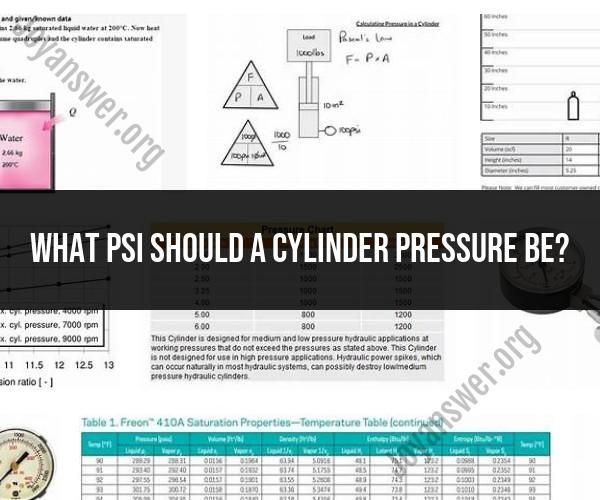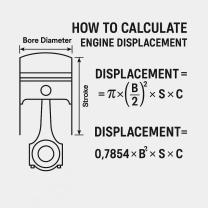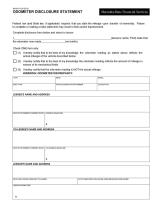What psi should a cylinder pressure be?
The ideal cylinder pressure, often measured in pounds per square inch (PSI), can vary depending on the specific application and the type of cylinder being used. Cylinders are used in various industries and contexts, such as pneumatic systems, hydraulic systems, and gas cylinders. The recommended PSI levels for cylinders depend on factors such as the cylinder's purpose, the material it's containing or moving, safety considerations, and the specifications provided by manufacturers. Here are some general guidelines for different types of cylinders:
1. Pneumatic Cylinders:Pneumatic cylinders use compressed air to generate motion. The recommended PSI level for pneumatic cylinders can vary based on factors like the cylinder's size, intended load, and required speed. However, typical working pressures for pneumatic systems range from 80 PSI to 120 PSI.
2. Hydraulic Cylinders:Hydraulic cylinders use pressurized hydraulic fluid to generate force and motion. The recommended PSI for hydraulic cylinders can vary widely depending on the equipment and application. Working pressures for hydraulic systems often range from 1,000 PSI to 5,000 PSI or more, depending on the size and function of the system.
3. Gas Cylinders:Gas cylinders are used to store and transport gases such as oxygen, nitrogen, acetylene, and others. The recommended PSI for gas cylinders varies significantly based on the type of gas, its intended use, and safety regulations. Different gases have different pressure limits, which are specified by regulatory bodies and industry standards. It's crucial to follow the guidelines and regulations specific to the gas being used.
It's important to note that the PSI levels mentioned above are general guidelines and can vary depending on the specific application, equipment design, safety regulations, and manufacturer recommendations. Always refer to the manufacturer's documentation, engineering specifications, and relevant industry standards for accurate and safe pressure recommendations.
Additionally, it's vital to ensure proper maintenance, regular inspections, and adherence to safety protocols when working with cylinders under pressure. Improper pressure levels can lead to equipment damage, safety hazards, or even catastrophic failures. If you're unsure about the appropriate PSI for a particular cylinder, consult with experts in the field or refer to reputable industry resources and guidelines.













